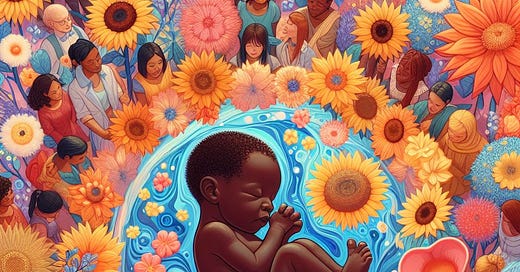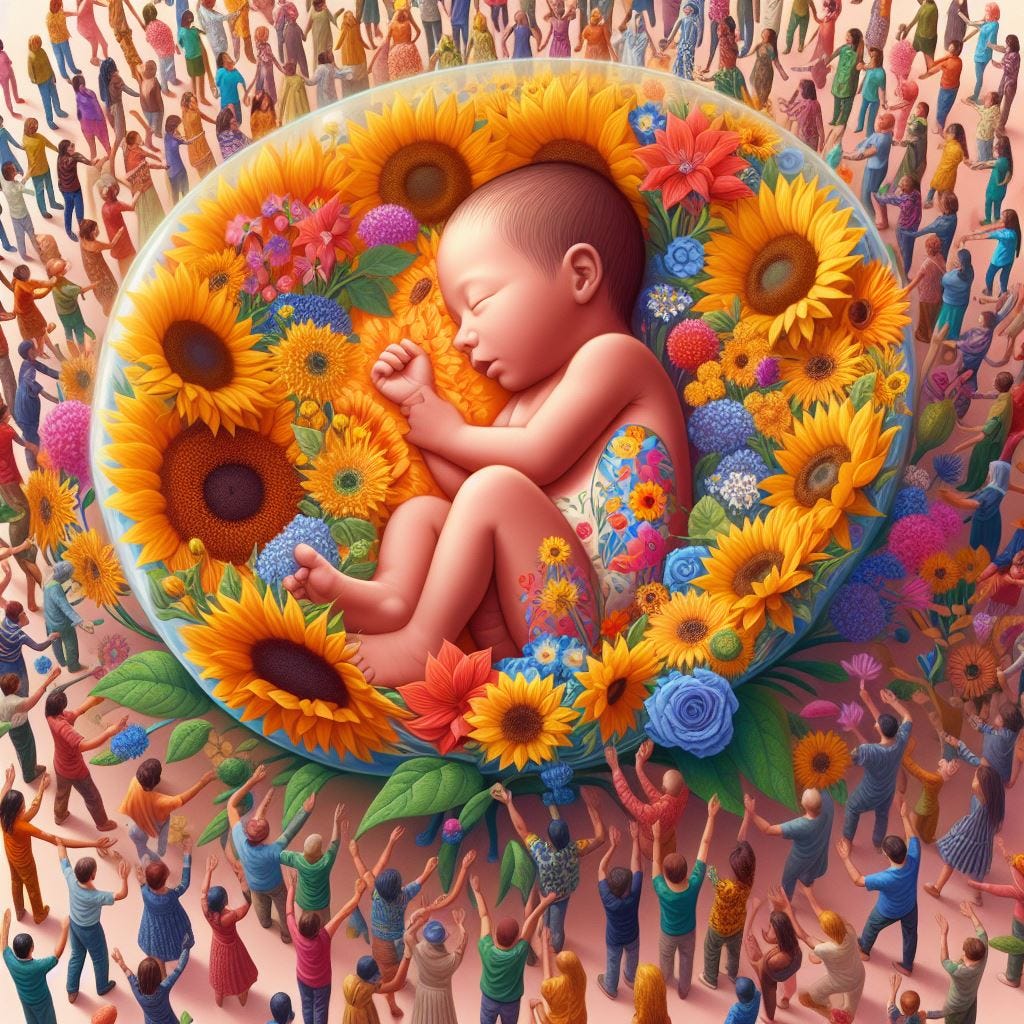Learning To See Crisis As The Portal To Ascension And Renewal.
To Be Born and To Know Derive From the Same Indo-European Root “Jan”.
📢 **Exciting News: Elevate Your Experience with Premium Benefits!**
Now, I'm thrilled to unveil an exciting development—we're introducing premium paid subscriptions to Vedanta Substack! By becoming a paid subscriber, you not only enhance your experience but also play a crucial role in supporting the continuation of our exploration.
Vedanta Substack is a reader-supported publication. To receive new posts and support my work, consider becoming a free or paid subscriber.
🔓 **Unlock Exclusive Benefits as a Paid Subscriber**
As a paid subscriber, you'll enjoy a range of exclusive benefits:
- Access to in-depth posts with special recommendations for further study.
- Personal invitations to exclusive chats or podcast interviews on captivating topics, featuring multiple thinkers simultaneously.
- The opportunity to propose the publication of your articles and essays on Vedanta Substack.
- Invitations to Vedanta retreats and events offering a deeper exploration of spiritual and philosophical realms.
“The strong things in life are crises,” writes in one of his books the writer Massimo Maggiani, grasping that profound truth that resides in the heart of every critical moment: the possibility of rebirth. A rebirth stands to symbolize those seeds of growth that every difficulty brings with it. Crisis, chrysalis, and chrism are all terms linked by the same Indo-European root “krei” which alludes to a moment of separation, judgment and decision. Like the chrysalis that must “free” the structures of the old caterpillar life to reveal the beauty of the butterfly, every crisis destroys certainties but also prepares the way for our most authentic rebirth.
A moment of pain but also a precious evolutionary chance, where everything that no longer works is deconstructed to make room for new possible integrations of the self. A real opportunity for growth. And perhaps it is for this reason that the writer connects the crises of life with the sacred and sacrifice.
Here too, etymology comes to our aid. The Indo-European root “sak” means “to adhere, to attach, to follow, to accompany, to adore” and refers to the concept of sacredness, separation and dedication to the divine. From this root come words like the Latin “sacer” (sacred, consecrated, cursed), the Greek “hágios” (holy, pure, venerable), and the Sanskrit “sákta” (that which follows, devoted, worshipper). Through the so-called sacrifice, something was ritually offered as a tribute to the gods to propitiate their favour. So a critical and painful moment which allowed me to come into contact with the deepest aspect of existence.
Passing Through the Walls: Julio Cortázar, Magical Realism, and the Vedantic Vision.
📢 **Exciting News: Elevate Your Experience with Premium Benefits!** Now, I'm thrilled to unveil an exciting development—we're introducing premium paid subscriptions to Vedanta Substack! By becoming a paid subscriber, you not only enhance your experience but also play a crucial role in supporting the continuation of our exploration.
Sacred, sacrifice and crisis have common roots, speaking to the soul of difficult but necessary events of death and rebirth. Critical passages through which to abandon a previous state to evolve towards new awareness. As in tribal initiation rites, overcoming tests allows access to a higher status of maturity and wisdom. Man has always exorcised these liminal phases with ritual practices. Because he instinctively senses how such experiences contain possibilities for spiritual growth. Even today “making a sacrifice” means enduring a loss to receive something higher in return. By sacrificing our current level, we can achieve new versions of ourselves, just as the chrysalis transforms into a butterfly.
Every crisis is a critical moment that hides opportunities for blossoming. It is worth approaching them as painful but necessary evolutionary crossroads, capable of leading to new inner horizons. As Hesse wrote, “Every spiritual progress is accompanied by a pain not yet endured.”
Source: Rendich, Franco. “Dizionario etimologico comparato di Indoeuropeo Sanscrito Greco Latino.” Palombi, 2010.
Image by Author
Etymology, thanks to the scholar Franco Rendich, reveals still fascinating connections, this time between “to be born” and “to know ”. Both words derive from the same Indo-European root “jan”, composed of the consonants “j” and “n”. These two letters had been chosen by the grammarians of the ancient Indo-European populations to express their religious beliefs about the cosmic and divine role of the Waters, considered carriers of the seed of life and knowers of all things.
The “j” represented the “straight motion forward” and the “n” the primordial Waters from which everything originates. The union of these two consonants, combined with the vowel “a”, gave rise to the verb “jan” which encompasses together the act of generating and giving birth. With the addition of the root “ñā”, which due to palatalization became “jñā”, here is the verb “to know” then formed.
In the classical Indo-European languages, we find this common root in words like the Sanskrit “jñā”, the Greek “gignōskō”, and the Latin “gnosco”. In Latin, we then have both “geno” and “gnascor”, both deriving from “jan” and linked to the meaning of “being born”.
There is therefore a profound semantic link between birth and knowledge. Coming into the world and acquiring awareness coincide in a common generative process. To be born means to bring to light new levels of understanding. This is why crises can be seen as labours that precede a “birth”. Dark and tiring moments however can lead to the birth of a new version of us, more evolved and aware. To go through pain to access new lucid perceptions about ourselves and the world.
Just as the chrysalis must apparently “die” as a caterpillar before being reborn a splendid butterfly, every crisis hides the possibility of bringing out dormant potential. To give birth, not without suffering, to new inner horizons. Crises are propitious occasions to explore unknown territories of our being and bring to the surface precious gems of awareness.
I have woven tales to share, for any who care to read them. My books await you on Google Books. Check also my stories on Medium.com.
I would be honoured if you considered subscribing to the Premium Contents of my Vedanta Substack and leaving feedback, comments, and suggestions both on this page and by writing to me at cosmicdancerpodcast@gmail.com.
Thank you for your precious attention.
“Say, “This misery that I am suffering is of my own doing, and that very thing proves that it will have to be undone by me alone.” That which I created, I can demolish; that which is created by some one else I shall never be able to destroy. Therefore, stand up, be bold, be strong. Take the whole responsibility on your own shoulders, and know that you are the creator of your own destiny. All the strength and succour you want is within yourselves. Therefore, make your own future. “Let the dead past bury its dead.” The infinite future is before you, and you must always remember that each word, thought, and deed, lays up a store for you and that as the bad thoughts and bad works are ready to spring upon you like tigers, so also there is the inspiring hope that the good thoughts and good deeds are ready with the power of a hundred thousand angels to defend you always and for ever. (II. 225)”






